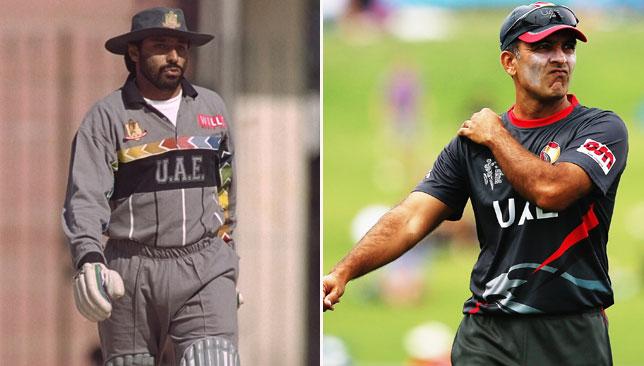
The UAE are facing India. They are a group of semi-professional cricketers, almost none of whom are from the country that they represent. Instead they are a ragtag bunch of expats from all over, although most of them hail from Pakistan. The one Emirati presence in their side is their captain, a man who has been chosen as a figurehead rather than for his cricketing ability. India are hugely fancied, much stronger and win the match easily.
This description is from 1994 but it works just as well for the team that lost to India last week. There are strong parallels between the team appearing at the World Cup in 2015 and the group that made it to their first one back in 1996.
That game against India in 1994 was the UAE’s first ever ODI, and such are the vagaries of the fixtures handed out by those that run international cricket they have only played in 21 games with official status since then. The game against India at this World Cup is just the second time that the teams have met since that first meeting.
Although that 1994 tournament was held in the UAE, arranged by Abdul Rahman Bukhatir, the owner of the Sharjah International Cricket Stadium, the UAE were not invited. It was only after the intervention of the Emirati captain of the side that the “home” team got to play.
Back then the UAE were led by Sultan Zarawani, the only UAE passport holder in the team and a man that wouldn’t have made the side if it wasn’t for his status as leader and benefactor of the team. He was the man that funded the side, paid for their airfares, arranged for their permission to attend the World Cup, who brought them together as a team.
Zarawani was the driving force in that group, in fact so much so that he says that he wasn’t welcome after the World Cup was over. He had hoped that the appearance on the biggest stage could be used as a catalyst for pushing the game forward in the Emirates, but that never happened. Speaking to Zarawani, he was clear that those in charge saw him as an obstacle rather than an asset.
“I was not under their control. I was never going to be a ‘yes man’ to them. My love for the game was different.” Zarawani said. “They don’t have the love of the game. I wanted to play cricket at this level. To feel it, to taste it. And I did it.”
Wills World Cup, 1996. Captain of #UAE Sultan Zarawani faced Alan Donald without helmet and was hit by bouncer. pic.twitter.com/71SflNBbNn
— Dipankar #LDL (@deep_anchor) February 19, 2015
In 2015 there is a similar situation with the captain, although not one that was such a dominating presence. Up until the eve of the World Cup the UAE side were led by Khurram Khan, by far the best player in the side and the country’s leading run scorer and wicket taker in ODIs. Khurram isn’t from the UAE, he is a Pakistani expat who works for a national airline. He has been hugely successful as both a leader and a player.
When the World Cup squad was announced Khurram was no longer captain. He had been replaced by Mohammad Tauqir, a UAE passport holder. While Tauqir is a decent cricketer, he had not been a member of this side for close to two years. While they would be denied, allegations have been made that Tauqir fulfils the same figurehead role that Zarawani was accused of having all those years ago. He is the acceptable face of this side, one that presents the image of this team that is the most palatable to those in charge.

After the 1996 tournament, things fell apart for Zarawani’s side. A change in eligibility criteria meant that the side that had been built around Zarawani fell apart. The qualification tournament for the 1999 World Cup took place in Malaysia in 1997 and the UAE finished 10th. The opportunity to use the World Cup as a springboard was gone.
Things are different now, and there will be high hopes that this is the beginning of things, not the end. The current UAE side have taken great strides under the coaching regime of Aaqib Javed. They are working closely with the ICC Academy – based in Dubai. Before making it to this World Cup they also qualified for the World T20, although they didn’t make it into the main draw.
Cricket in the UAE remains hugely popular, but they are cricket fans not fans of UAE cricket. The key to moving things forward is for the local population to develop a love for the game. The idea of having a side of just Emiratis is unlikely, but to have a token presence only further cements the idea of cricket as a game that belongs to expats rather than locals. The Indian Premier League games have sparked interest, perhaps this time the World Cup will be the beginning rather than the end.
Peter Miller is the author of Second XI: Cricket in its Outposts, available on Amazon.